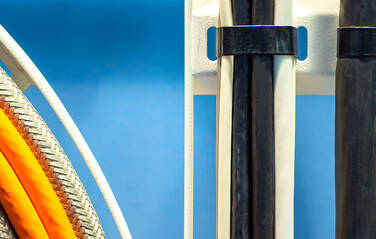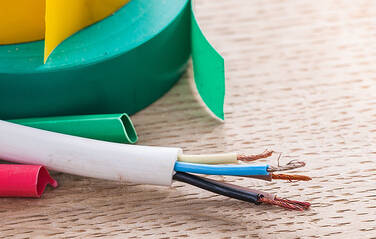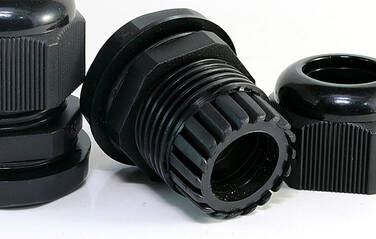Cable glands are a staple part of any electrician’s kit. Our latest guide looks at what they are and how they work.
Cable glands are ‘mechanical cable entry devices’ which basically means that they are used to attach and secure an electrical cable to a piece of equipment. They are used within a variety of industries, including electrical, lighting, telecommunications, and instrumentation.
What do cable glands do?
A vital part of any electrical system and useful in cable management, a cable gland is a sealing and terminating device that protects and supports connections between cables as well as connections between cables and equipment. A cable gland offers resistance against environmental factors like penetration from dust, dirt and water. Where a cable is secured by a cable gland, it will suffer less wear and tear at vulnerable points as the gland will hold it firm, preventing it from rubbing or being disconnected. Cable glands with a metal construction can also provide vital earthing.
How do cable glands work?
Cable glands comprise a central enclosure that the cable passes through. There will also be a lock nut with washers and a seal plus an attachment cone and a compression or sealing nut. Depending on the type of cable gland, there might be a two-part enclosure, electrical earthing tags, insulation and a rubber seal. When the cable is passed through the cable gland and secured in place, the gland forms a tight seal around the cable, that is impervious to external moisture and dirt.
Types of cable gland
Nylon cable glands – these are ideal for use with flexible cables and offer a high strain relief. Nylon cable ties are commonly used in telecoms, for data cables and electrical power.
Brass cable glands – offering excellent resistance to corrosion plus electrical and thermal conductivity, brass cable glands are used with medical equipment and in machinery.
How to choose cable gland size
Cable glands are available in different sizes to accommodate various cable diameters. The cable diameter should be measured at the widest point of the insulation and the cable gland diameter should be large enough to take all the cables it will hold. Care should also be given to ensure that the cable gland will be the right size for the mounting hold.
Cable glands from Cableties-online
We offer customers a choice of nylon cable glands, spiral swivel fitting conduit glands in PVC and brass cable glands for use indoors and out. Our nylon cable glands are supplied in a choice of 5 sizes for cables from 4mm-25mm diameter. The spiral swivel fitting conduit gland is flexible and non-reactive and is designed for cables between 4mm and 18mm. Our strong brass cable glands offer effective resistance against magnetism and deformation at all temperatures. Suitable for indoor use and out, brass cable glands are used in the construction industry; the outdoor brass cable glands can be used with plastic or rubber coated cables or uncoated cables, and the indoor brass cable glands can be used with armoured and plastic or rubber coated cables. Both types will accommodate cables from 20mm-75mm in diameter.
For all your cable gland enquiries, our friendly sales team can be contacted by phone on 01623 412160 or email at sales@cableties-online.co.uk








